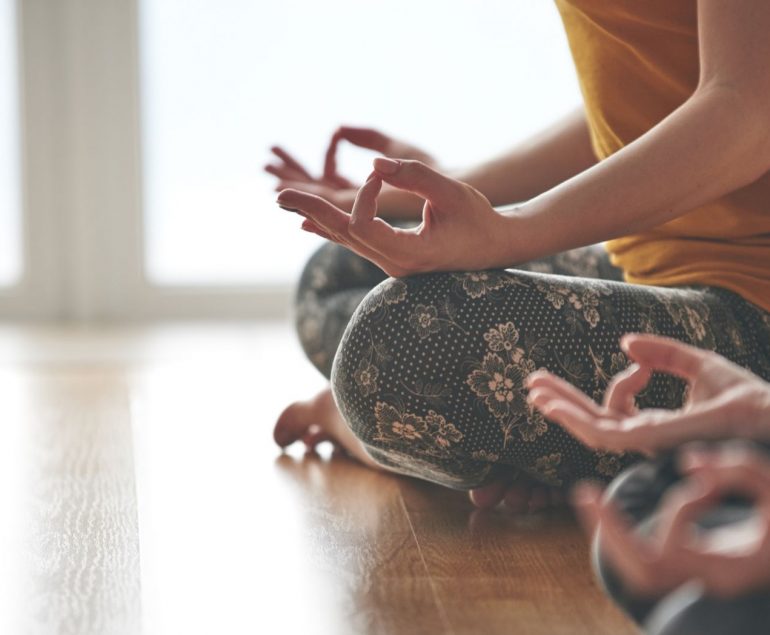- On 21 June, the world will once again take a deep breath and stretch to celebrate the International Day of Yoga. This year’s celebration holds greater meaning; an inward journey may be the best antidote to the external checks placed on us by a confounding virus. A planetary lockdown with social distancing norms means that we wouldn’t experience the collective energy of a yoga congregation. But this year’s defining theme of Yoga at Home and Yoga with Family, will ensure respect for public health measures, while encouraging yoga with family bonding, in the security of our homes.
- Just five years ago, in 2015, the longest day in the northern hemisphere was designated the International Day of Yoga by the United Nations, recognizing that yoga was not just a holistic path to health and well-being, but was a beloved global phenomenon. India’s Prime Minister, Narendra Modi, introducing the initiative to the UN General Assembly emphasized the need to take India’s ancient tradition to and people across the world and particularly the youth. He said:
“Yoga is an invaluable gift of India’s ancient tradition. It embodies unity of mind and body; thought and action; restraint and fulfilment; harmony between man and nature; a holistic approach to health and well-being.” - Rooted in ancient Indian wisdom and heritage, yoga does not represent any religion or region. This universal appeal of yoga led to 177 UN states supporting and co-sponsoring the resolution.
- In the Indian Ayurveda system of medicine, good health is seen not merely as an absence of disease, but as overall well-being- physical, mental and spiritual. Yoga focuses on the human body’s natural tendency toward self-healing. Since yoga can be gentle, almost anyone can do it, regardless of age or fitness level. Some yoga styles can indeed be intense and vigorous, while others relaxing and meditative. No matter which type one chooses, it is a great way to de-stress, strengthen the body, focus the mind, and rejuvenate the spirit.
- Yoga is in fact an ancient technology validated by modern science. Clinical research around the world has documented the benefits of yoga in controlled trials. The Osteopathic Association of United States, for instance, weighed in for yoga and declared that the relaxation techniques incorporated in yoga can lessen chronic pain, such as those in the lower back, arthritis, headaches and carpal tunnel syndrome, and that yoga can also lower blood pressure and reduce insomnia. Other physical benefits of yoga include increased flexibility, increased muscle strength and tone, improved respiration, energy and vitality, a balanced metabolism, weight reduction, circulatory health, improved athletic performance and protection from injury. The World Health Organization mentions yoga as a means to improve health in its global action plan on physical activity 2018–2030- ‘More active people for a healthier world’. Yoga is now a key element of integrative medicine as research in yoga therapy conclusively establishes its efficacy as a non-traditional medical system.
- Yoga help us manage mental stress, which can otherwise have a debilitating effect on the body and mind. Yoga builds mental resilience, sharpens concentration and has a calming effect. It can be very effective in developing coping skills and reaching a more positive outlook on life.
- While yoga appears like a long stretch, it has a deeper impact on your body. It helps change the way you feel, look and move. Yoga builds strength, flexibility and confidence. Long term yoga practitioners are documented to lose weight, relieve stress, improve immunity and enjoy better health. The immunity boosting effects of yoga are particularly relevant in these pandemic times.
- The global journey of yoga began relatively recently. North America was introduced to this word by Swami Vivekananda, when he spoke about the benefits of yoga at the 1893 Parliament of Religions in Chicago. Fifty-four years later Indra Devi opened a yoga studio in Hollywood, in 1947. Yoga became established on the US West Coast in the mid-’50s. In 1958, Indian-born Swami Vishnu-Devananda, a disciple of Swami Sivananda Saraswati, arrived in San Francisco, sponsored by the artist Peter Max. His 1960 book, The Complete Illustrated Book of Yoga, which he famously presented to the Beatles, became an essential guidebook for many practitioners. He founded the Sivananda Yoga Vedanta Centers, headquartered in Montreal, which became one of the largest networks of yoga schools in the world.
- In the 1960s, led by publication of B.K.S. Iyengar’s definitive ‘Light on Yoga’, meditation and yoga practice boomed across America. By the late 60s, yoga was well established in Montreal and was growing rapidly in British Columbia, which became a hub for yoga development in Canada. Vancouver is now home to some of Canada’s most cutting edge yoga studios.
- The iconic images of mass yoga practice on Parliament Hill, or besides the Niagara falls, define the immense popularity of yoga in Canada. It is certainly the most yoga-curious country in the world. According to Google search analytics, the overall trend from 2004 to the present shows a consistent upward incline in yoga searches with Canada regularly in the lead for most searches on yoga.
- A survey published by Statistics Canada showed that next to walking, activities such as yoga are among the most popular form of exercise in Canada. Yoga is loved in Canada. A leger360 poll last year reported that about 21 per cent of all Canadians reported that they practiced yoga and that more young Canadians aged 18-34 (35 per cent) practice yoga compared to older generations. The Canadian Yoga Alliance was formed in 2004 and now has over 15000 Canadian yoga teachers. At least three online Canadian yoga directories are in place with a combined listing of over 3000 yoga studios and trainers across Canada. There is also an effort to list yoga as a recognized sport in Canada. Many Canadian celebrities and professional athletes are committed yoga practitioners.
- This year has seen humanity face the unprecedented challenge of a global pandemic. The physical and mental stress and anxiety associated with the threat of infection and the isolation of quarantine have brought back focus on yoga as a powerful tool to deal with the stress of uncertainty and isolation, as well as to maintain physical well-being.
- While social distancing norms put in place due to the pandemic have limited the access to organized yoga studios sessions and other community spaces, yoga practitioners have inventively turned to home practice and online yoga resources.
- Yoga’s virtual avatar makes it more accessible. India’s High Commission in Ottawa and Consulates in Toronto and Vancouver have a range of online yoga activities lined up for the entire fortnight leading up to 21 June. These involve a galaxy of experts and gurus with live and recorded yoga sessions, yoga tutorials, conferences on the benefits of yoga and various competitions that Canadian yoga enthusiasts can participate in.
- Yoga is going viral. So, go online, take a deep breath and begin that inner journey.
H.E. Ajay Bisaria
High Commissioner of India to Canada


